Making Maple Syrup: A Sweet Process Revealed
By Jude Mead
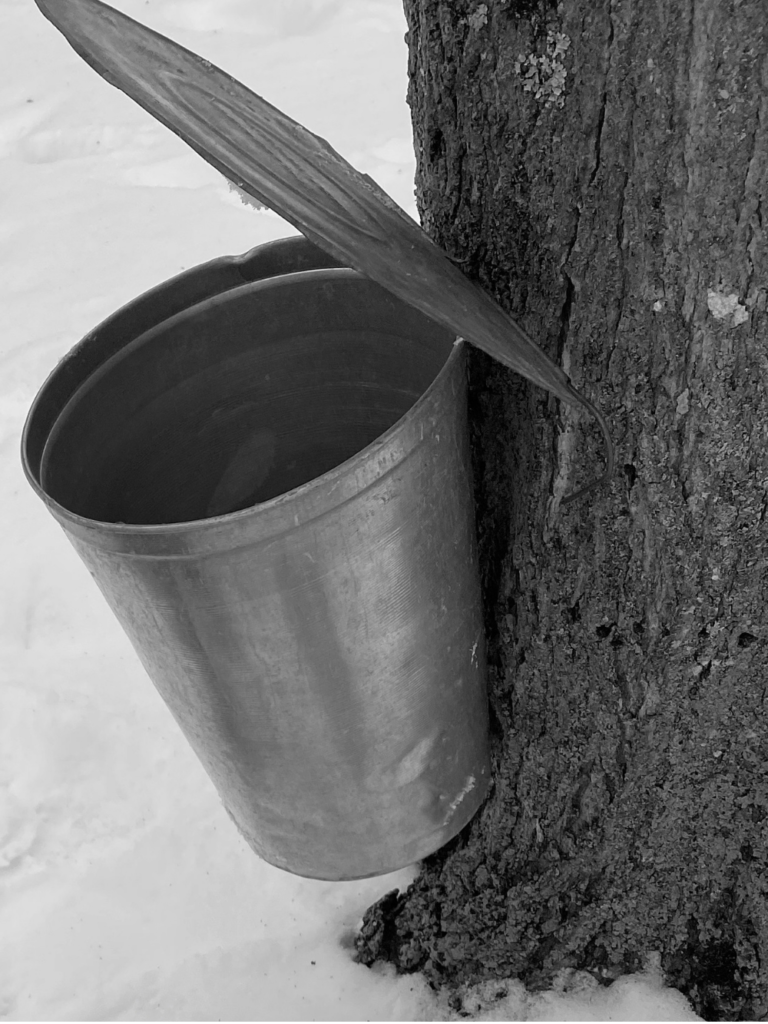
Maple syrup is a wholesome and natural sweetener that is produced by boiling the sap that flows out of the sugar maple tree in early spring. Many people look forward to the annual winter tradition of standing in the middle of a steam-filled room, inhaling that sweet maple scent and tasting fresh, hot maple syrup moments after the magical transformation takes place.
As Covid restrictions continue to limit the public from visiting sugarhouses, however, those uninitiated into the world of sugaring can follow the process through this photographic journey that reveals the hard work and commitment behind one of Norfolk’s sweetest products.
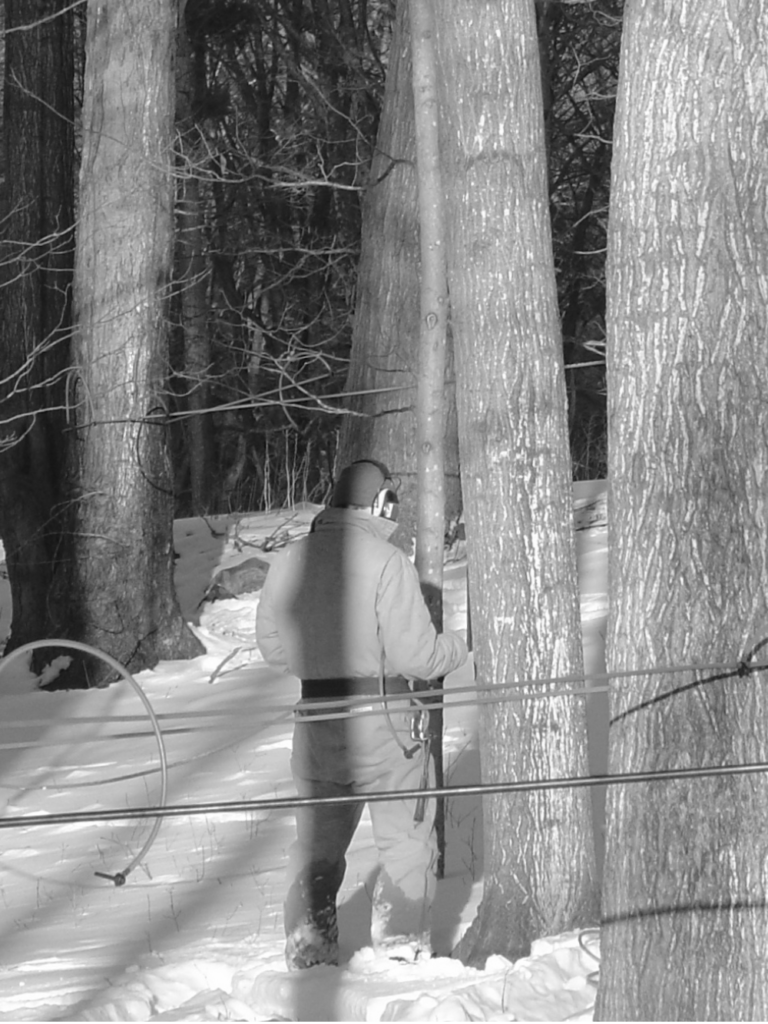
Preparation starts months ahead of the sugaring season. Firewood must be cut and split. Plastic tubing is strung throughout a grove of maples, known as a sugarbush. Sugarmakers must also examine and test all equipment before the season begins. Wholesome sugaring practices begin with close attention to the health of the maple trees throughout the year. This shows responsible stewardship of the land and produces a better tasting syrup.
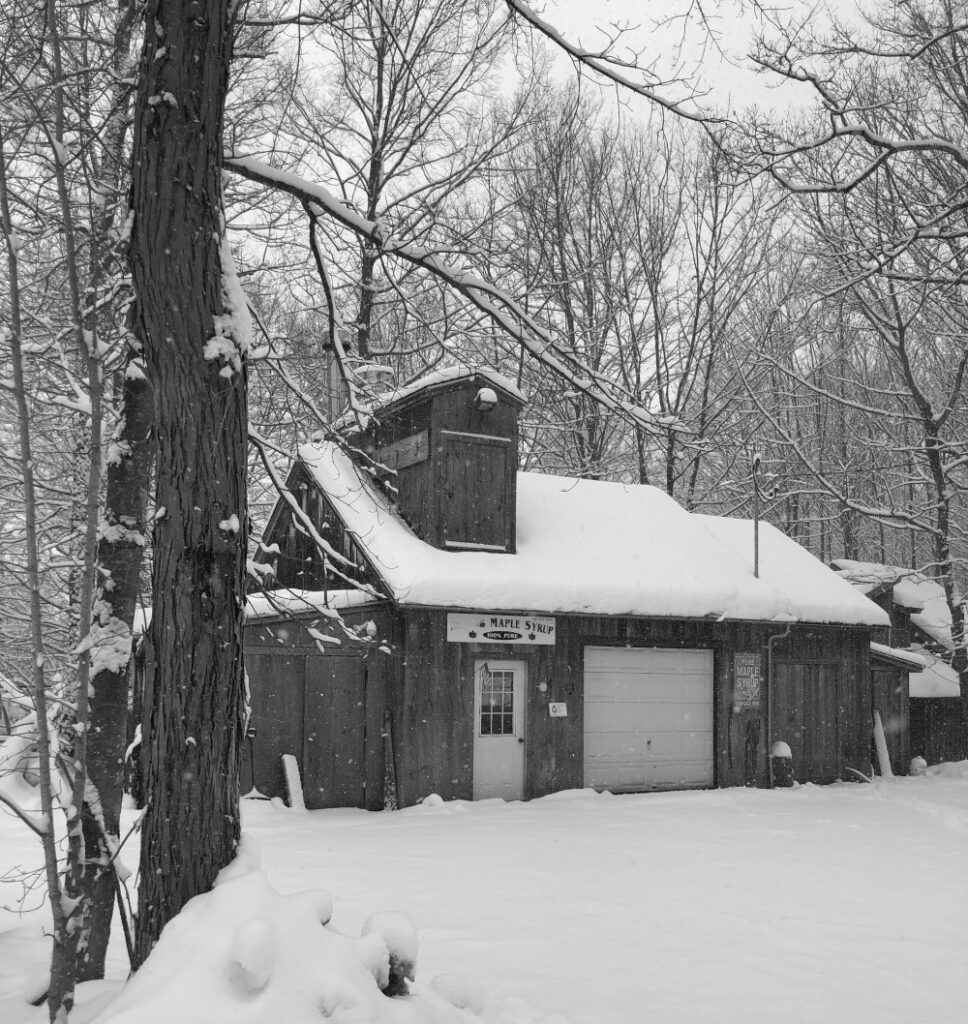
Maple sugaring season can extend from early February until late March, depending on the weather. Sap flows from the tree when nighttime temperatures are below freezing and daytime temperatures are above freezing. Once the nightly freeze stops, the sugaring season is over because the trees begin to form buds for their leaves, changing the sap to a less desirable flavor.
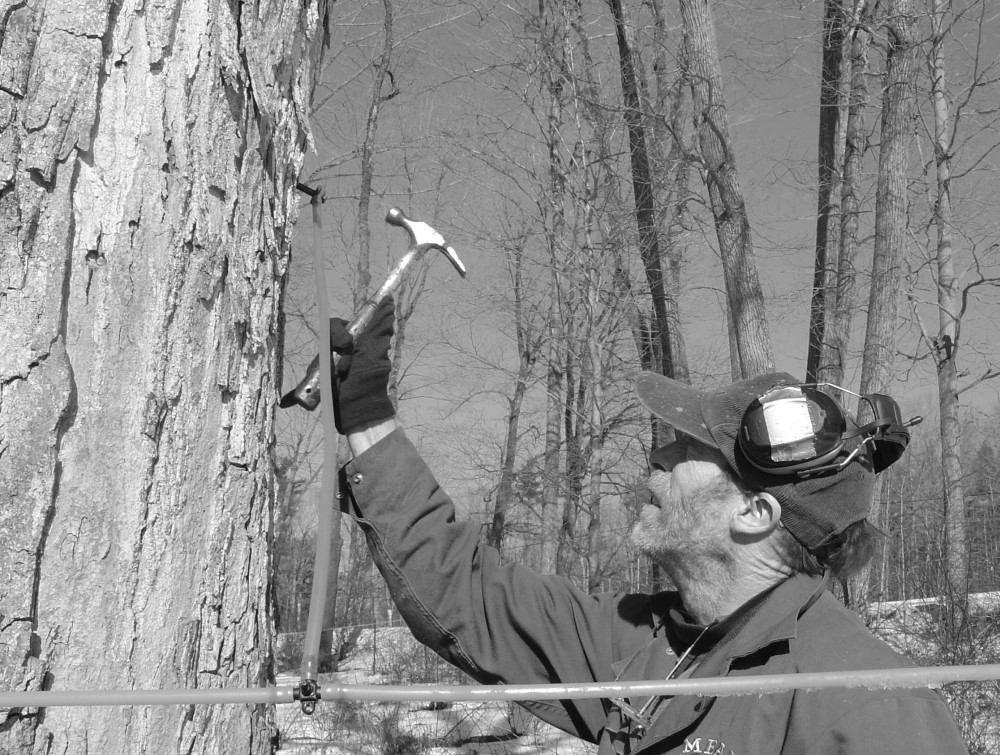
Before sap can be collected, the trees must first be tapped. Two methods for tapping are the traditional bucket-and-spout method and the pipeline, or tubing, method. Both approaches require that a small downward angled, one-inch-deep hole be drilled into the tree, usually on the warmer south side. A hollow spout is then gently tapped into the hole with a hammer. If the spout has a hook, a covered bucket is clipped onto it.
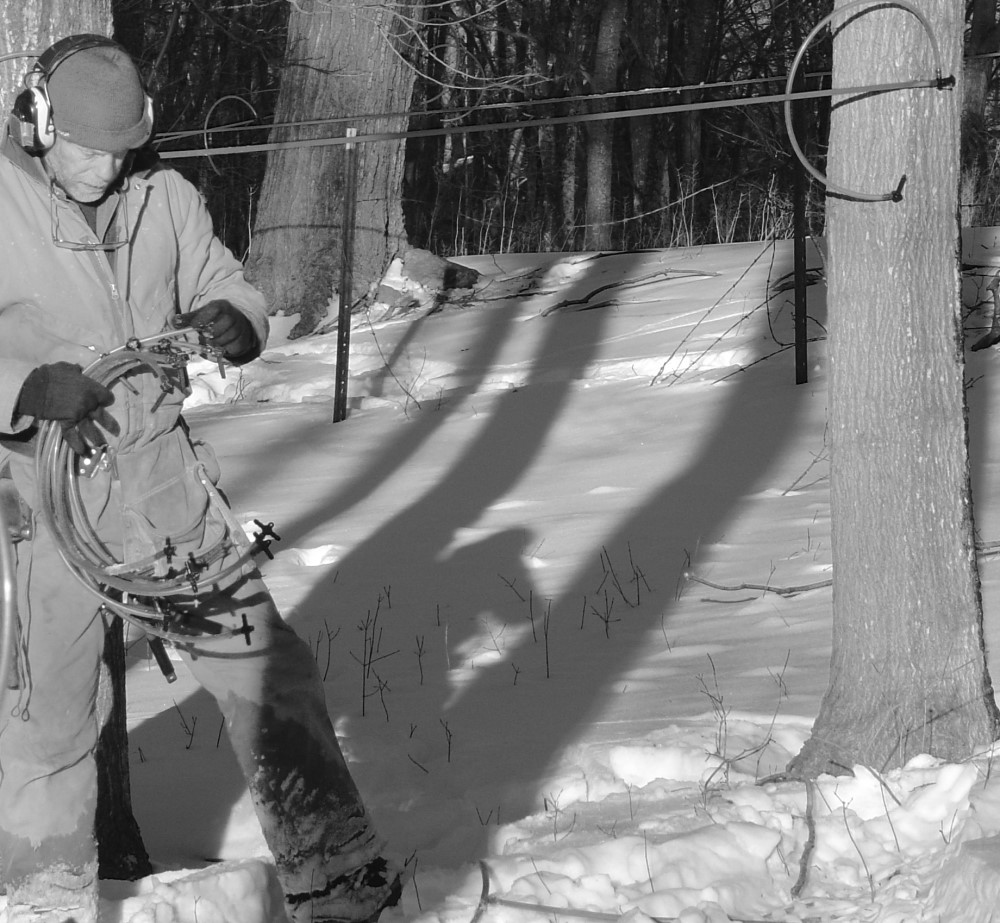
If plastic tubing is used, the spout is attached directly to the tubing and then inserted into the hole. The tubing method is more popular and practical for large-scale sap collection. Sap flows from the tapholes, through the network of tubing and into a collection tank. A vacuum pump applied to the tubing system can safely stimulate sap flow without creating stress on the tree and increase sap yield. As it is collected, the sap is stored in stainless steel containers until it can be processed at the sugarhouse. Sap is perishable and must be boiled quickly before it can ferment.
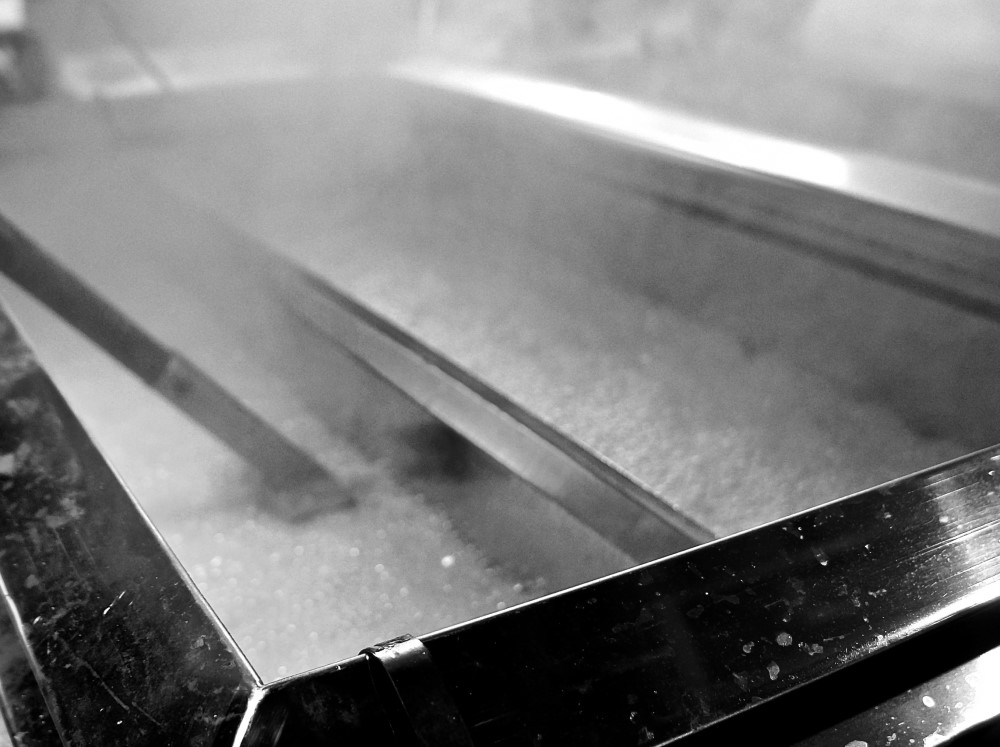
Inside the sugarhouse, the sap is first sent through a reverse osmosis machine. This is a high-pressure filtration machine that pumps the sap through a membrane that removes large amounts of water. Sap is roughly 98% water and 2% sugars. Valuable time and energy are saved by reducing the volume of liquid and concentrating the sap.
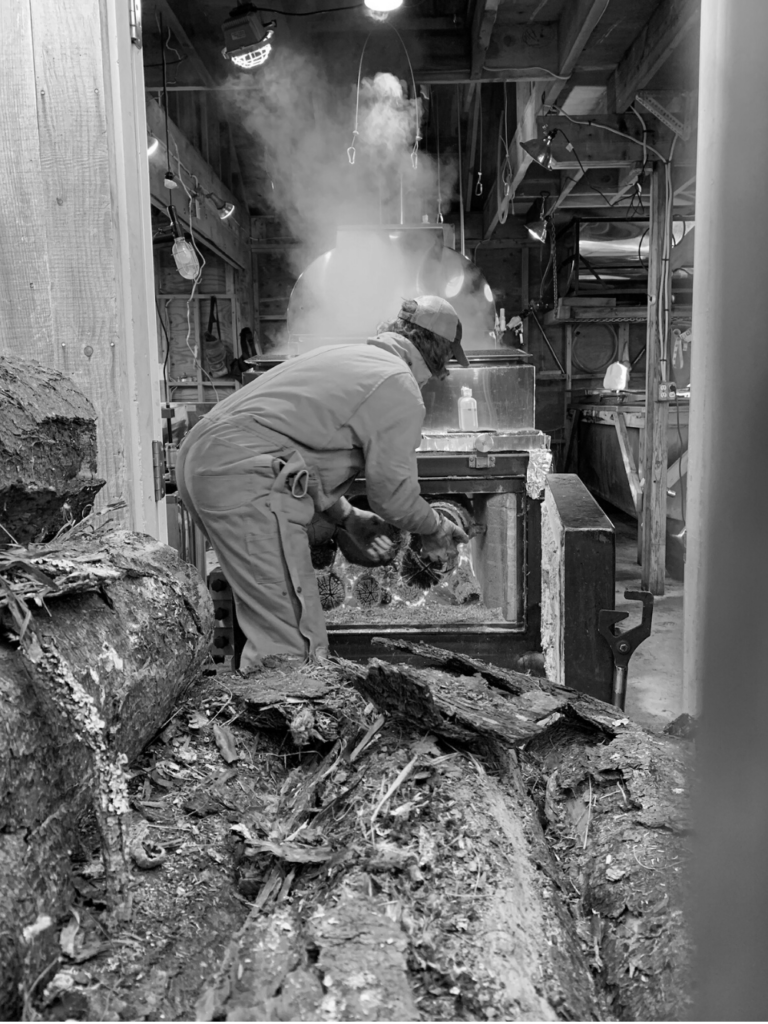
The next step is to fire up the stainless-steel evaporator, essentially a very large stove where the boiling takes place. Firewood is the traditional fuel source, although larger producers may use oil or natural gas.
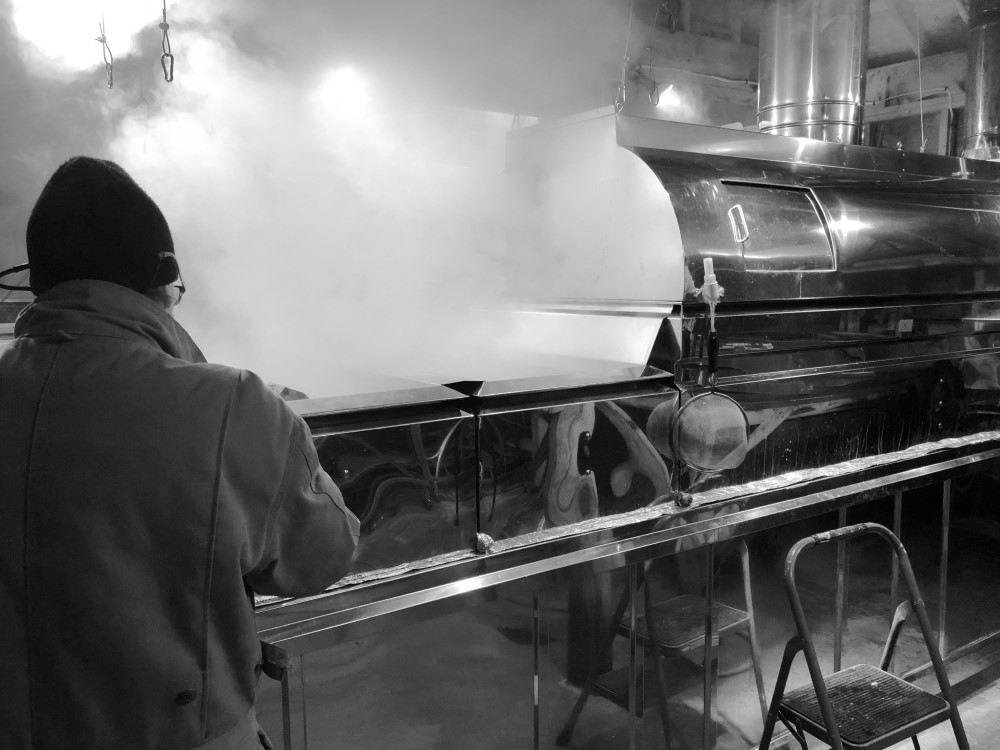
An evaporator is divided by a series of connected channels that allow a continuous flow of sap. Raw sap enters at the back corner of the pan. As the sap flows through, the heat boils it, continually removing water in the form of steam.
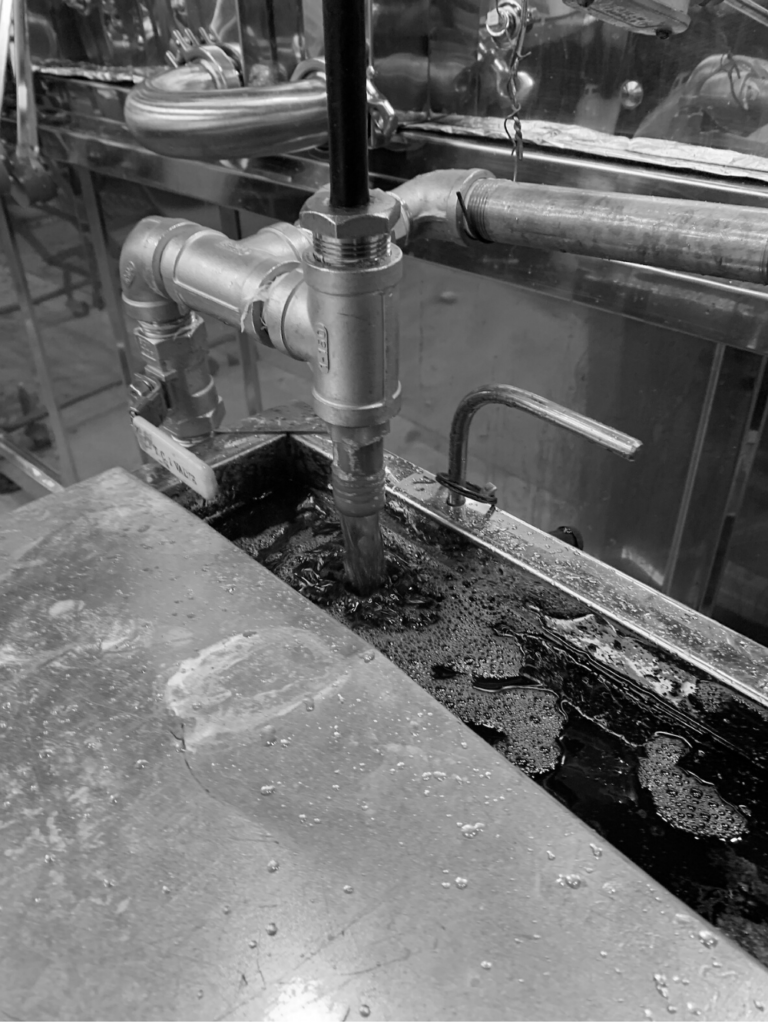
With less water, the sap’s natural sugars concentrate and caramelize and it becomes darker and more flavorful. By the time it is drawn off at the front, the sap is now maple syrup. It takes approximately 40 gallons of sap to produce one gallon of maple syrup.
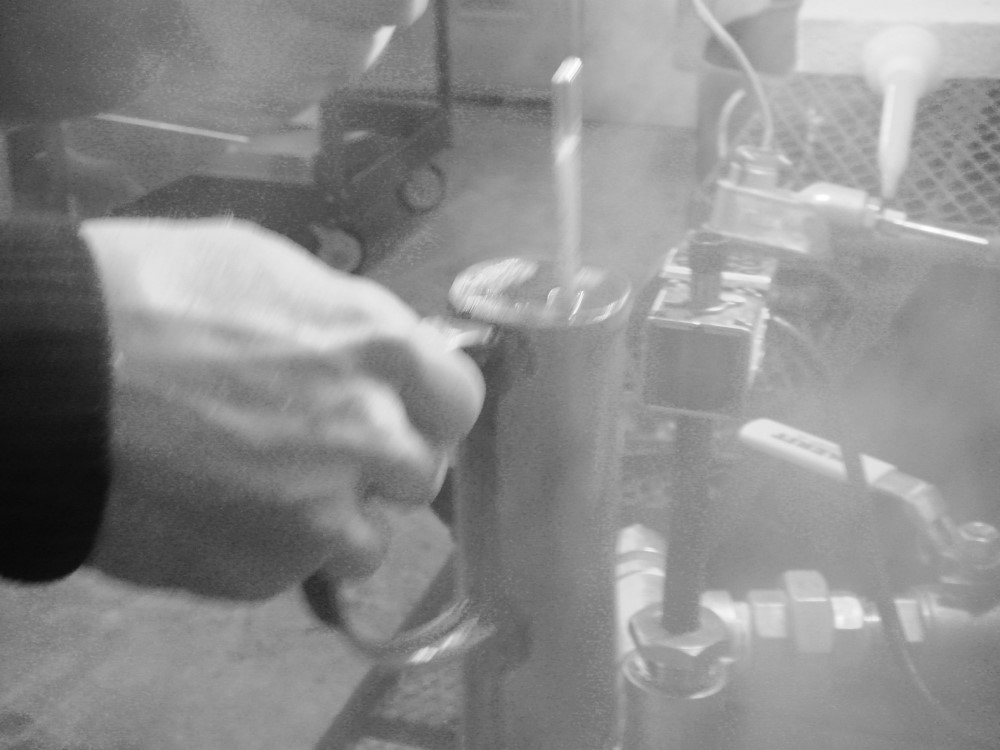
Maple sap officially becomes syrup when the temperature reaches seven degrees above the boiling point of water for the day—usually around 219 degrees F. The boiling point of water can change depending on elevation and barometric pressure. The syrup is then checked using a hydrometer, which measures the density of the liquid. When the sap reaches 66.9 percent sugar it is ready to be drawn off the evaporator.
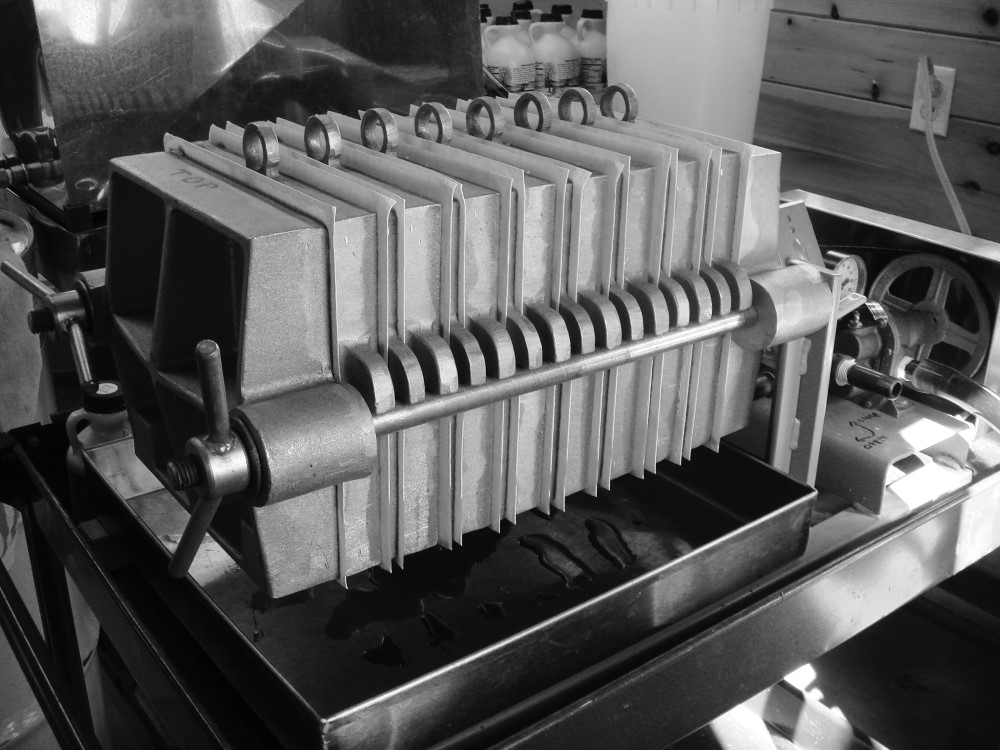
After the draw-off, the syrup must go through a proper filtering system to become a retail product. A filter press is used to force the hot syrup through a series of filters under pressure. This removes any sugar sands suspended in the syrup that formed during the evaporation process. Sugar sands are natural minerals, but if not filtered out they can make the syrup cloudy. The syrup must be clear to receive a grade.
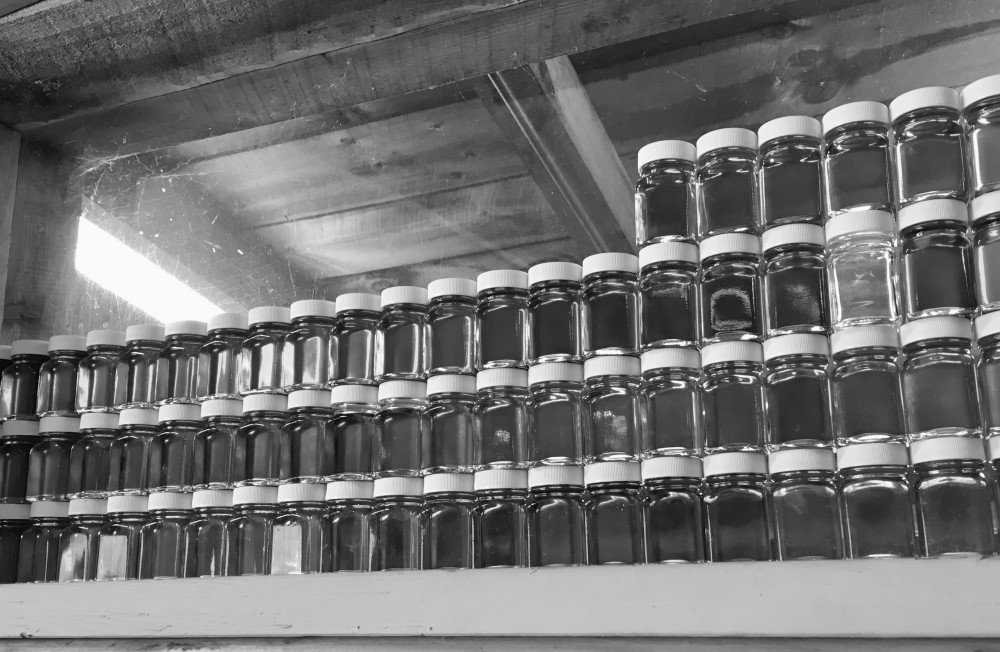
Maple syrup is graded from Grade A light to Grade A dark. All grades are the same density and contain the same sugar content. The color of the syrup, however, can range from pale golden to dark amber. This color difference depends on when the syrup was made. In early spring, the first sap runs are clear and produce a lighter colored syrup. As temperatures rise, the sap, and thus the syrup, is darker. The darker the syrup color, the stronger the flavor.
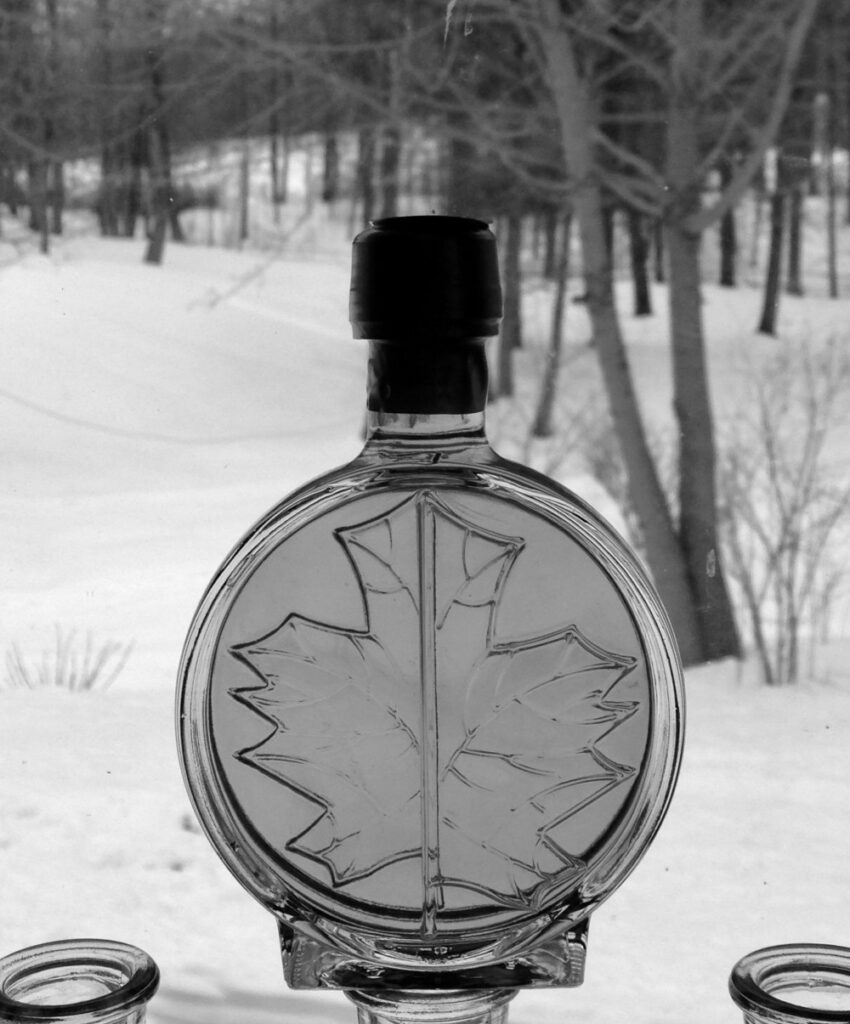
The four grades of syrup are based on strict standards and are graded on four characteristics: color, clarity, density and flavor. There is no “best” grade for maple syrup—that is completely up to a person’s individual taste. The grades include:
Grade A Golden Color with Delicate Taste
Grade A Amber Color with Rich Taste
Grade A Dark Color with Robust Taste
Grade A Very Dark Color with Strong Taste
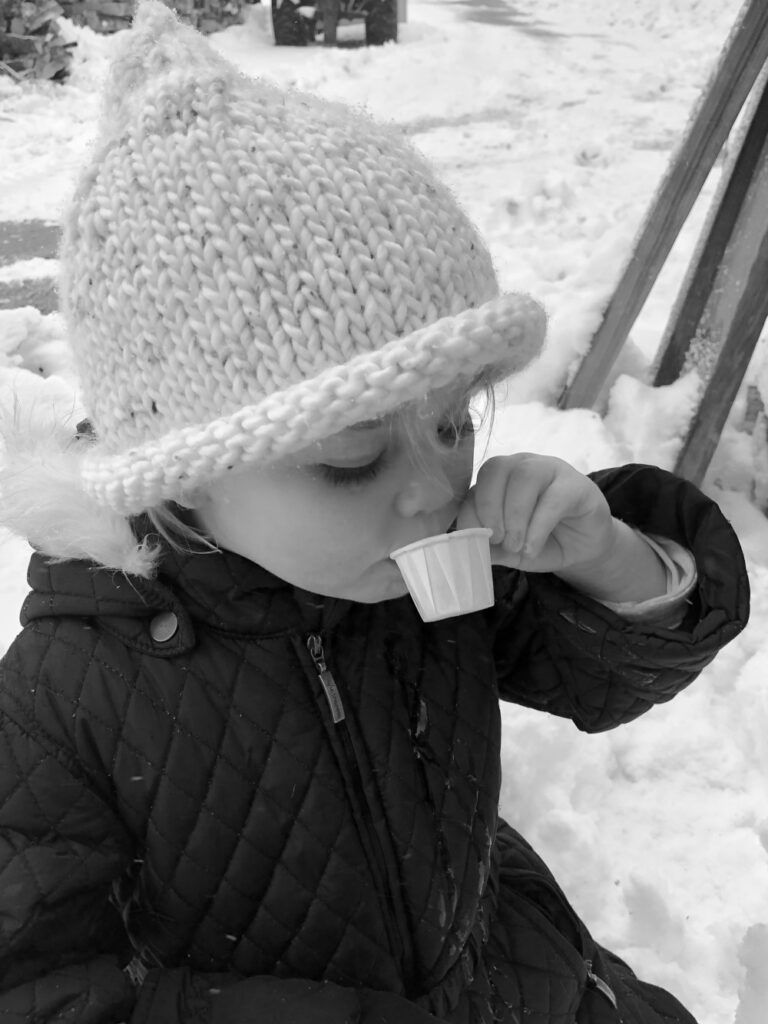
Having flowed through its process, the maple syrup is now ready to be enjoyed atop a steaming stack of buttermilk waffles, stirred into a hearty bowl of oatmeal or drizzled over scrumptious roasted root vegetables. Making syrup may be labor intensive, but the work is worth every golden drop of sweetness.
